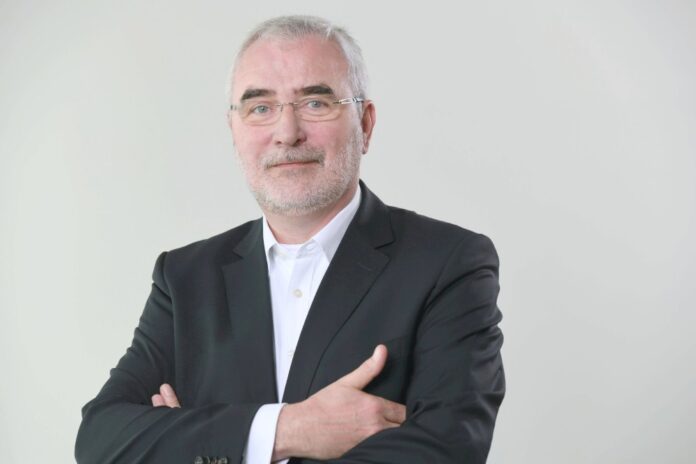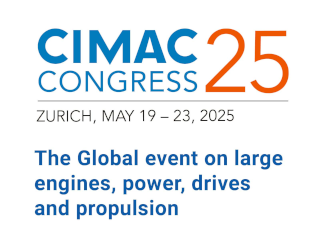
SMM opens its doors for the 30th time this year. Bernd Aufderheide, President and CEO of Hamburg Messe und Congress, spoke to HANSA about the highlights of this year’s event and his personal favourites of the past. By Anna Wroblewski[ds_preview]
This year, the 30th SMM is taking place. In your view, what highlights await visitors to the fair?
Bernd Aufderheide: The fact that SMM can take place live again in its usual form after the corona-related time-out is a highlight in itself. We’ve also created a few things for the anniversary edition to make the trade show experience even more diverse and profitable. Networking is an important factor here. The new format »It’s wine o’clock« allows exhibitors and visitors to exchange ideas in a relaxed atmosphere.
The theme of the 30th SMM is »Driving the maritime transition«. Shipping has embarked on an ambitious path towards decarbonisation and now needs innovative solutions quickly, especially regarding propulsion technologies and alternative fuels. The maritime energy transition is also a key topic at the exhibition stands, in the accompanying conference programme and at the new »Transition Stages«. There, we give experts and exhibitors the opportunity to present their findings or product innovations. One stage is dedicated to alternative drives, environmental technologies and sustainability, while another is all about automation, digitalisation and data management. The third stage focuses on passenger ship interiors, equipment and technology, and challenges and opportunities for the cruise industry. This shows: Like the industry, its leading trade show is continuously evolving.
How do you think the founders of SMM, first held in 1963, would look at SMM today? Would they be satisfied with how this trade fair has developed?
Aufderheide: I think the marine engineers who started the SMM predecessor event would be quite proud of us. What was a strong German event with around 200 exhibitors then has become a leading international trade show. This year we expect over 2,000 exhibitors and around 40,000 trade visitors from more than 100 countries, and all the halls are fully occupied. For those responsible in the industry, participation is a must because here, they can experience all the important innovations in the field of maritime technology.
The »Ship and Machinery« exhibition has become something big within six decades. German Chancellor Olaf Scholz has taken over the patronage, and we expect numerous top-class speakers from all over the world at the specialist conferences.
Digitalisation, accelerated by the corona pandemic, shows that business travel and contacts can be replaced by digital communication options. What impact does this trend have on the trade show business?
Aufderheide: The enormous popularity we are experiencing from the exhibitor side actually shows the opposite. It’s true: video conferencing has made it possible for many to stay in touch even during difficult times. But on the other hand, we feel that there is a great need to catch up when it comes to face-to-face meetings with business partners. We often hear the phrase »At last you’re back«. After all, people are social creatures. Experience shows: Personal contact is hard to replace, especially in business relationships that are also based on trust. Many of our exhibitors and visitors expressly emphasise how practical it is to have numerous meetings in the compact format of a four-day trade show that would otherwise only be possible with many time-consuming and costly (air) trips to different continents.
How are you positioning yourself as HMC for the future?
Aufderheide: We continue to assume that there will be leading global trade fairs for numerous sectors in the future, such as SMM for the maritime industry. In less international industries, on the other hand, we believe that a stronger regionalisation of trade shows is likely – whereby »regional« here can also mean an entire continent or large regions of the world. In summary, this means from our point of view: The time of the very large exhibition centres is coming to an end. However, good connections, accessibility – preferably in the centre of a metropolis – and a highly attractive environment are needed.
In the sense of a campus concept with several universities and research institutes in the direct vicinity as well as its »own park« Planten un Blomen between the CCH and the exhibition grounds, the HMC is very well positioned here. In addition, there is an »own« TV tower as a landmark and attractive neighbourhoods and event locations that can be reached on foot in just a few minutes.
Based on recent experience and against the backdrop of climate change, the decision in favour of a destination will also increasingly depend on very good, accompanying digital offerings and a convincing sustainability concept in the future. We are already working on both and will continuously expand and adapt our performance in these areas.
You have been Managing Director of HMC since 2004 and Chairman of the Management Board since 2007. What has been your personal SMM highlight so far?
Aufderheide: There is no single highlight. For 60 years, SMM has been a trade show that always impresses with tremendous exhibits and remarkable innovations. But for all the technology, the focus for me has always been on meeting people from different cultures and countries who are driven by the fascination with shipping. They all ensure – often enough under adverse conditions – that tremendous flows of goods flow safely across the world’s oceans. In short, my highlight is the people at SMM.
Interview: Anna Wroblewski















